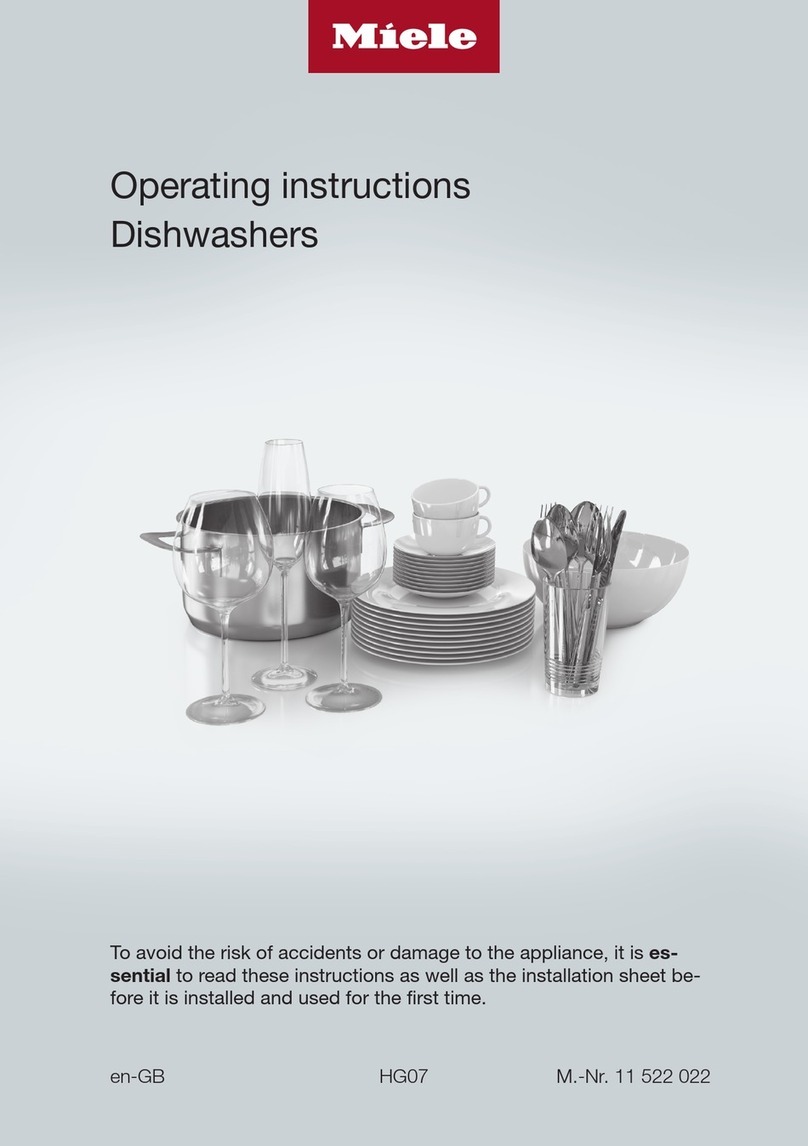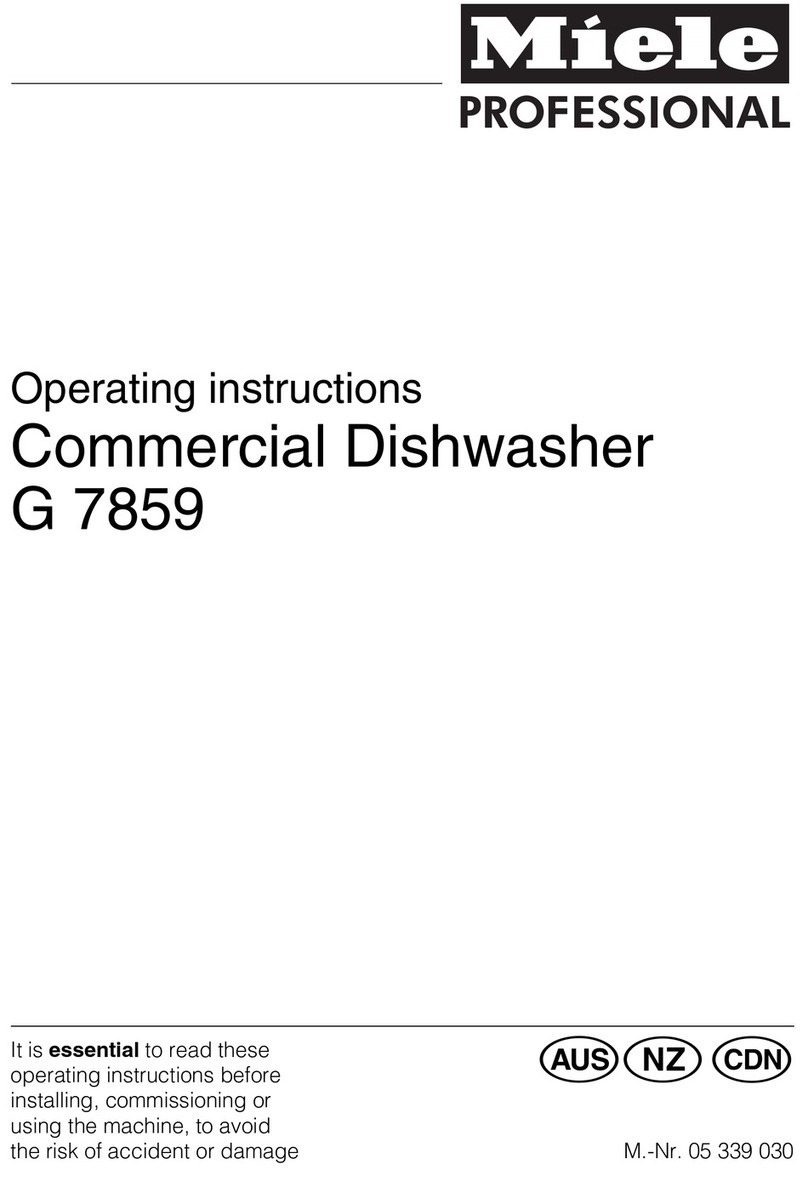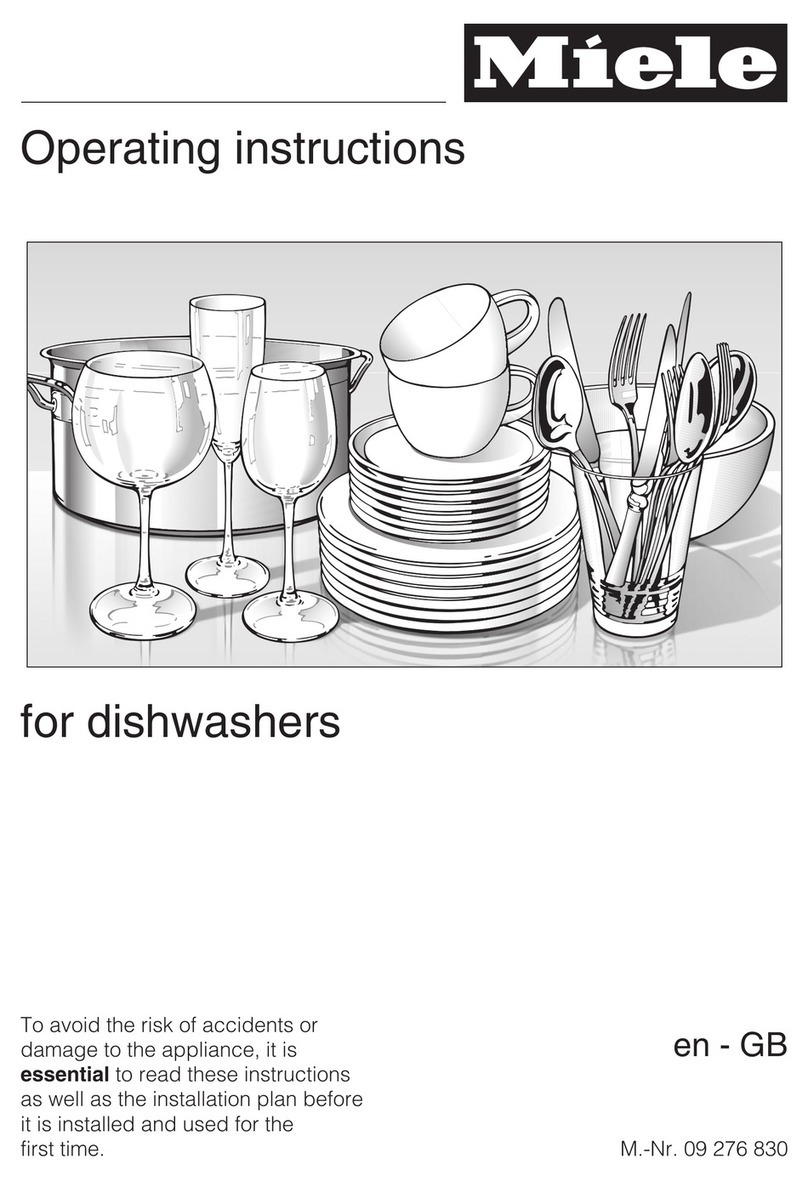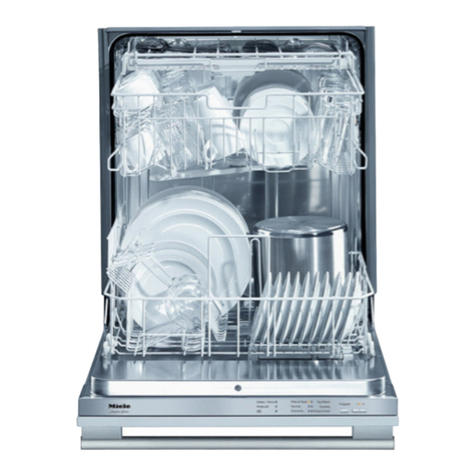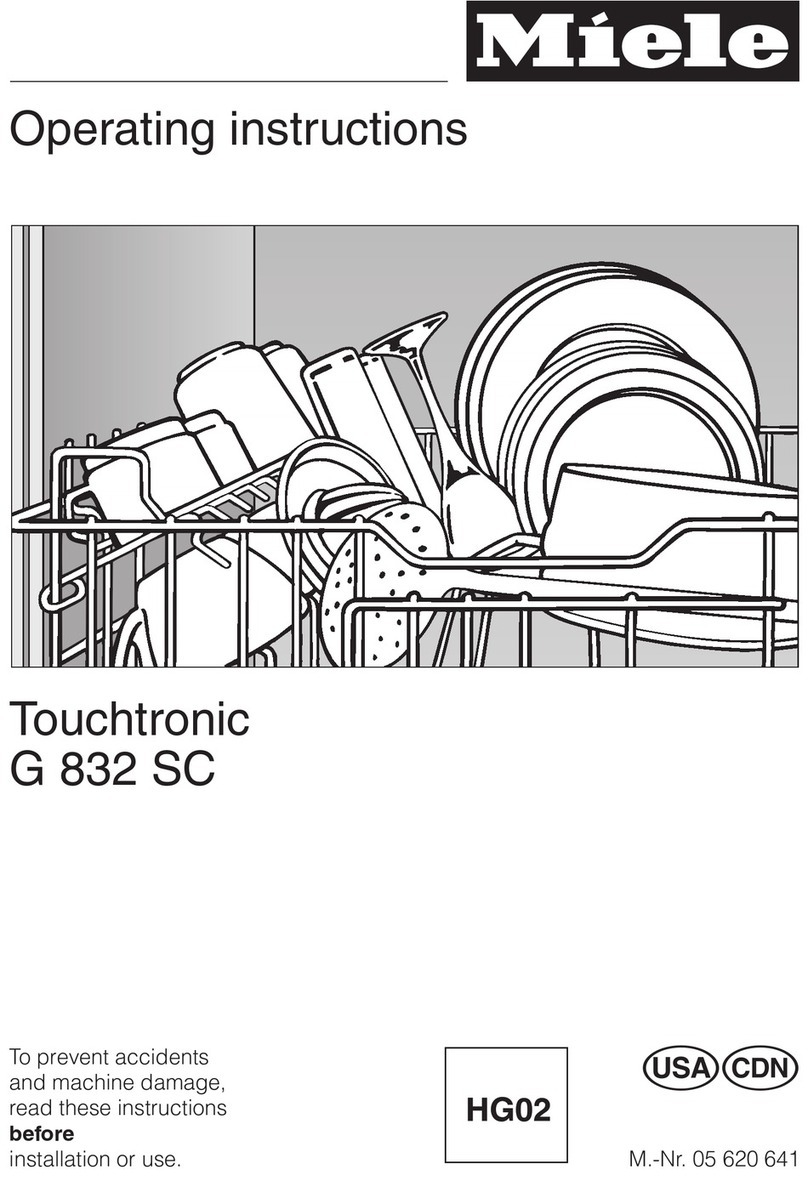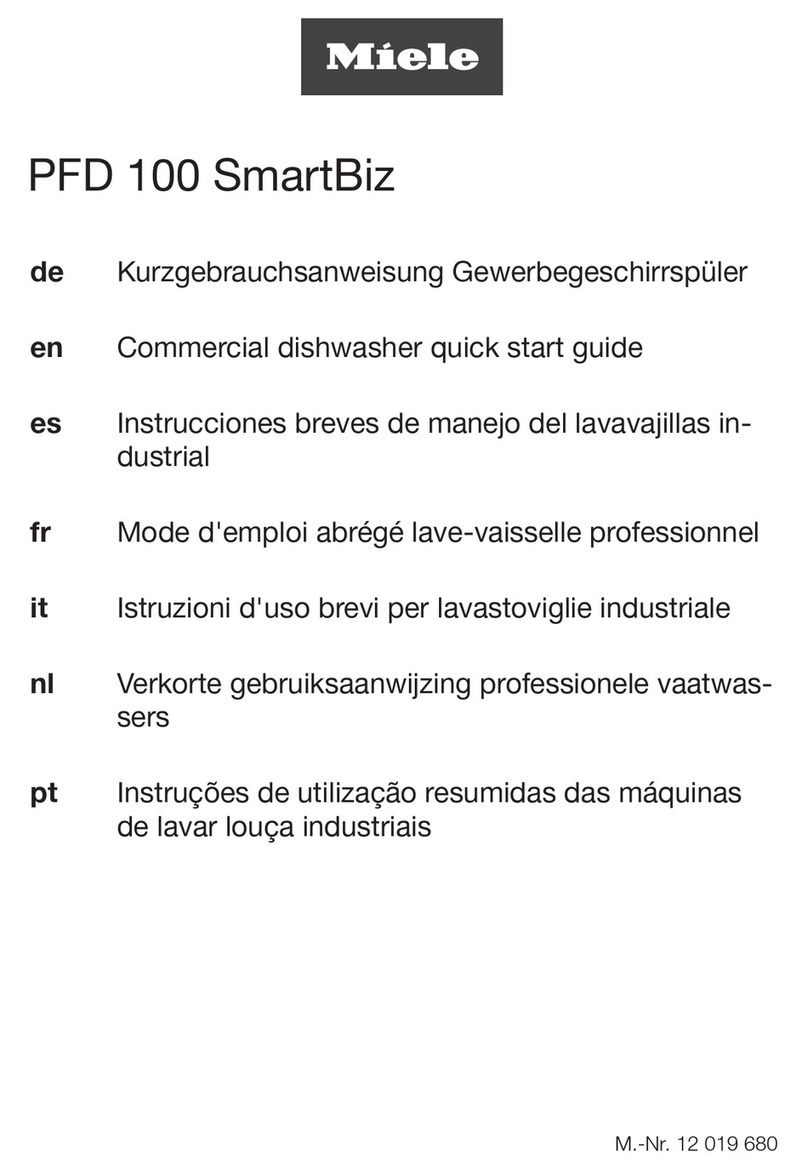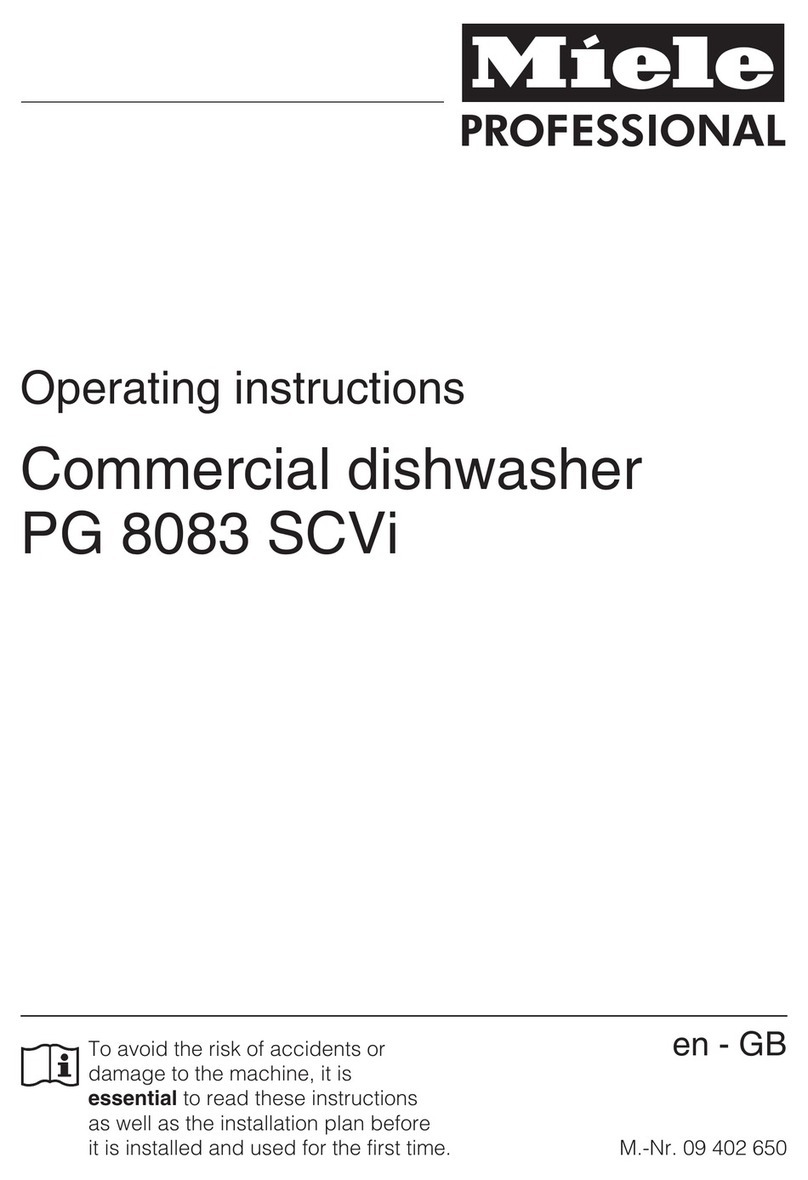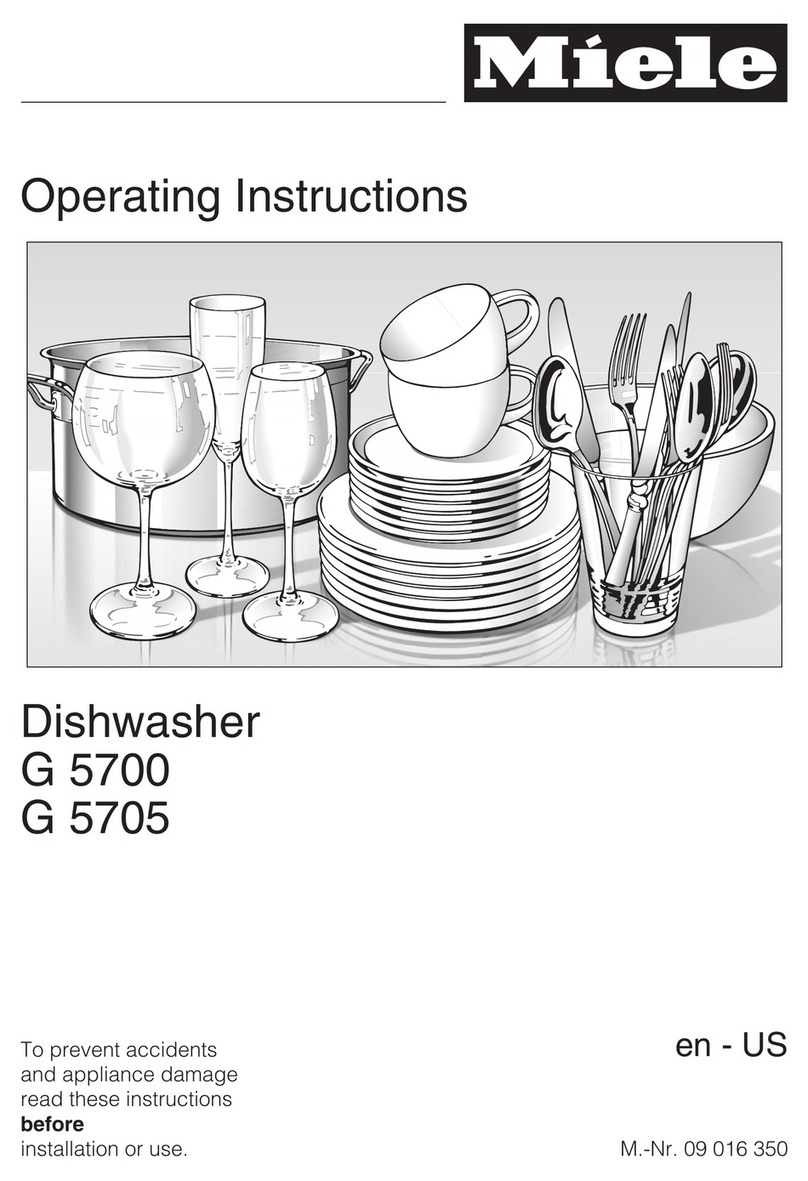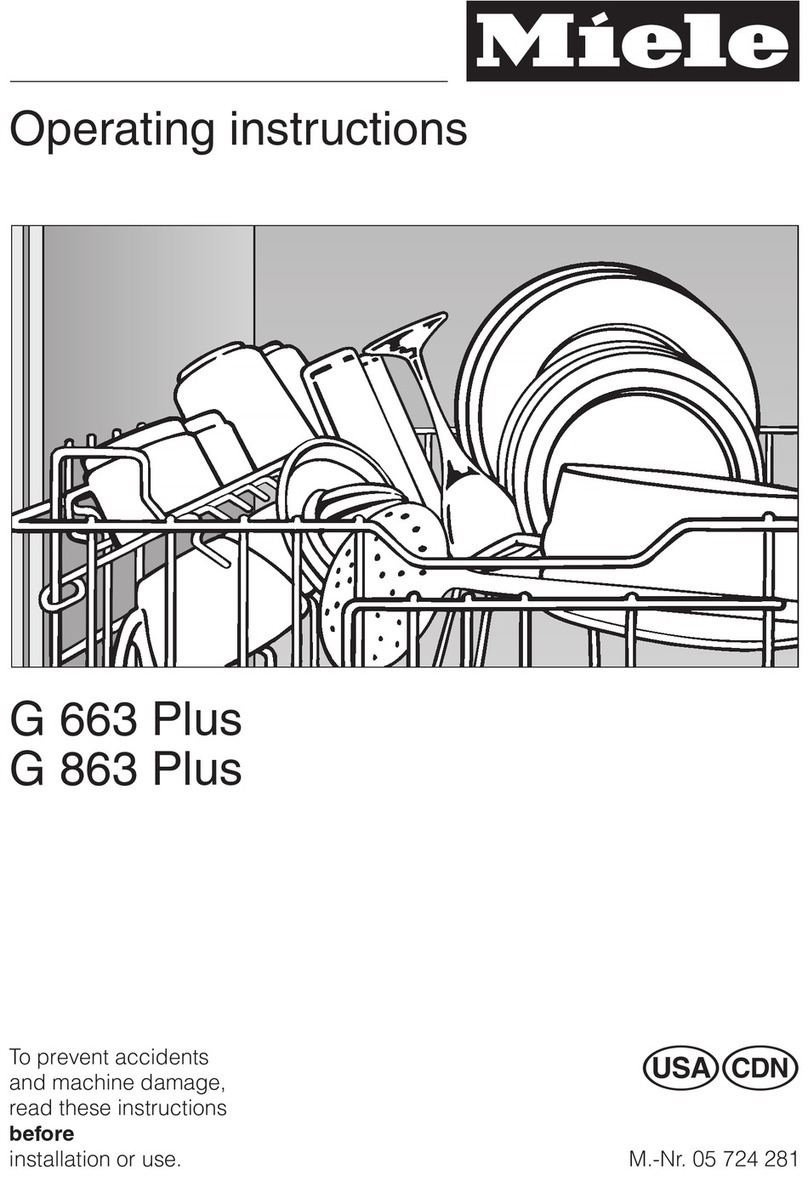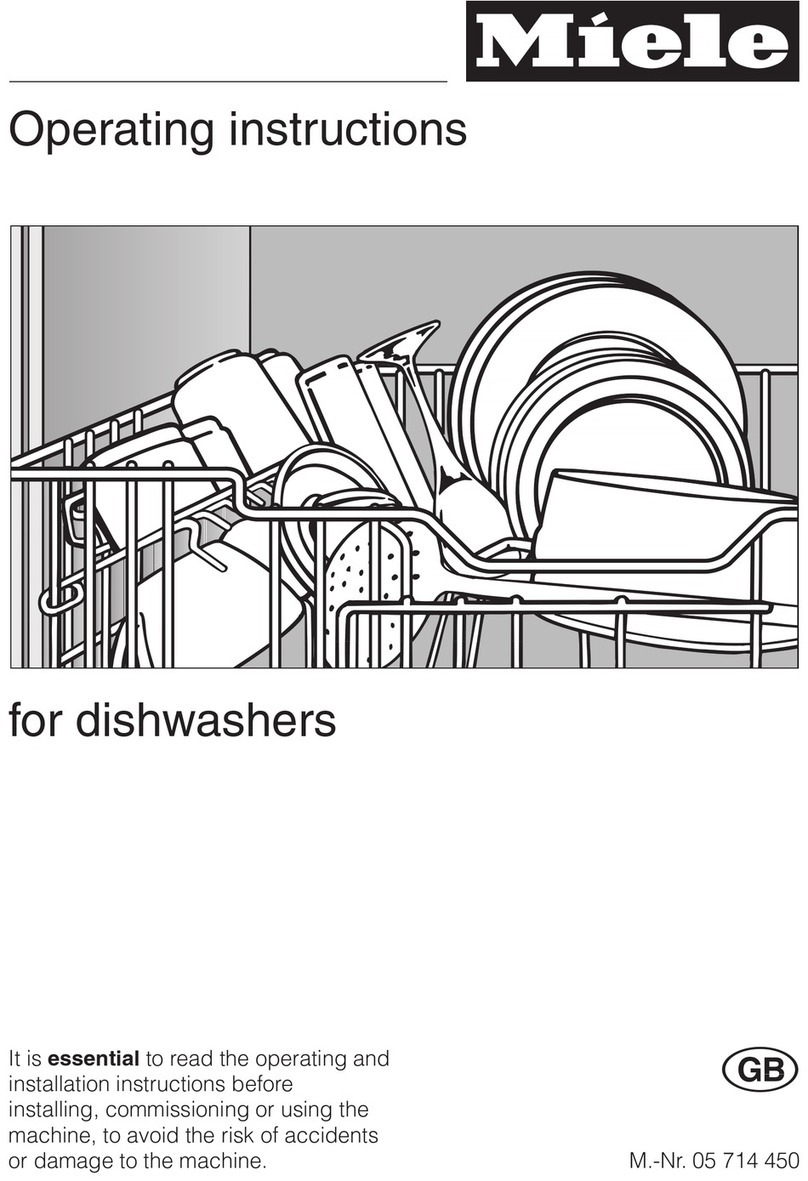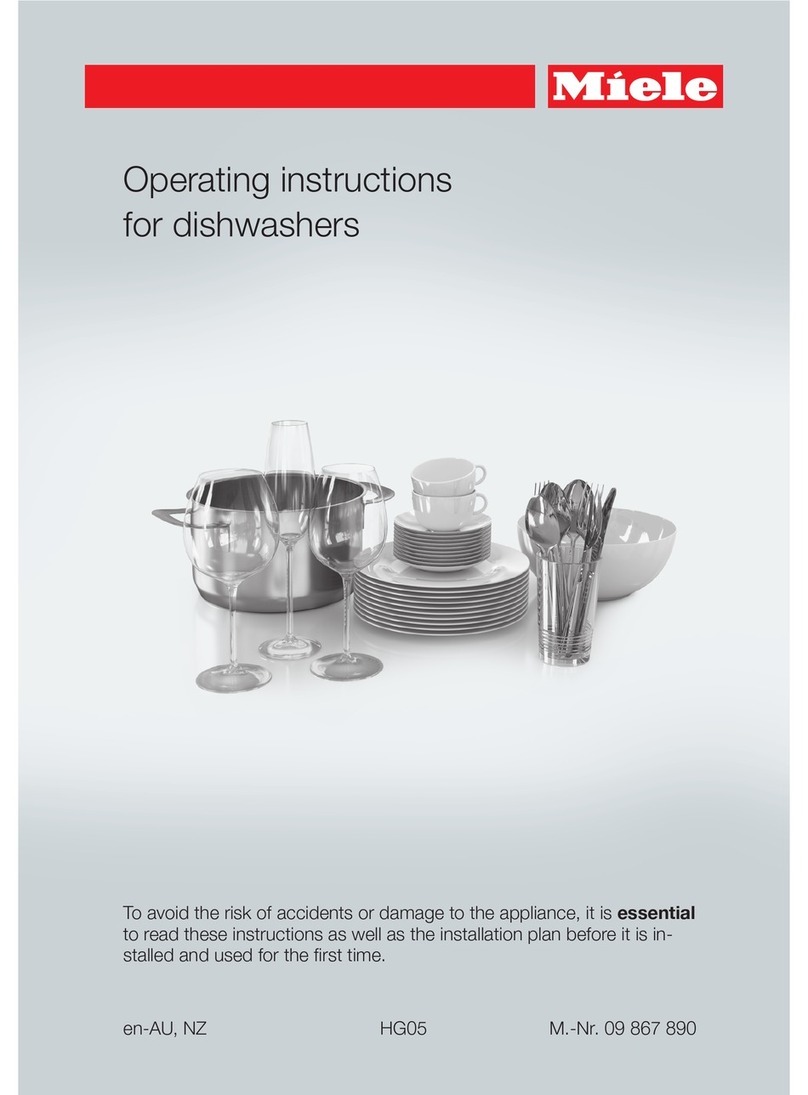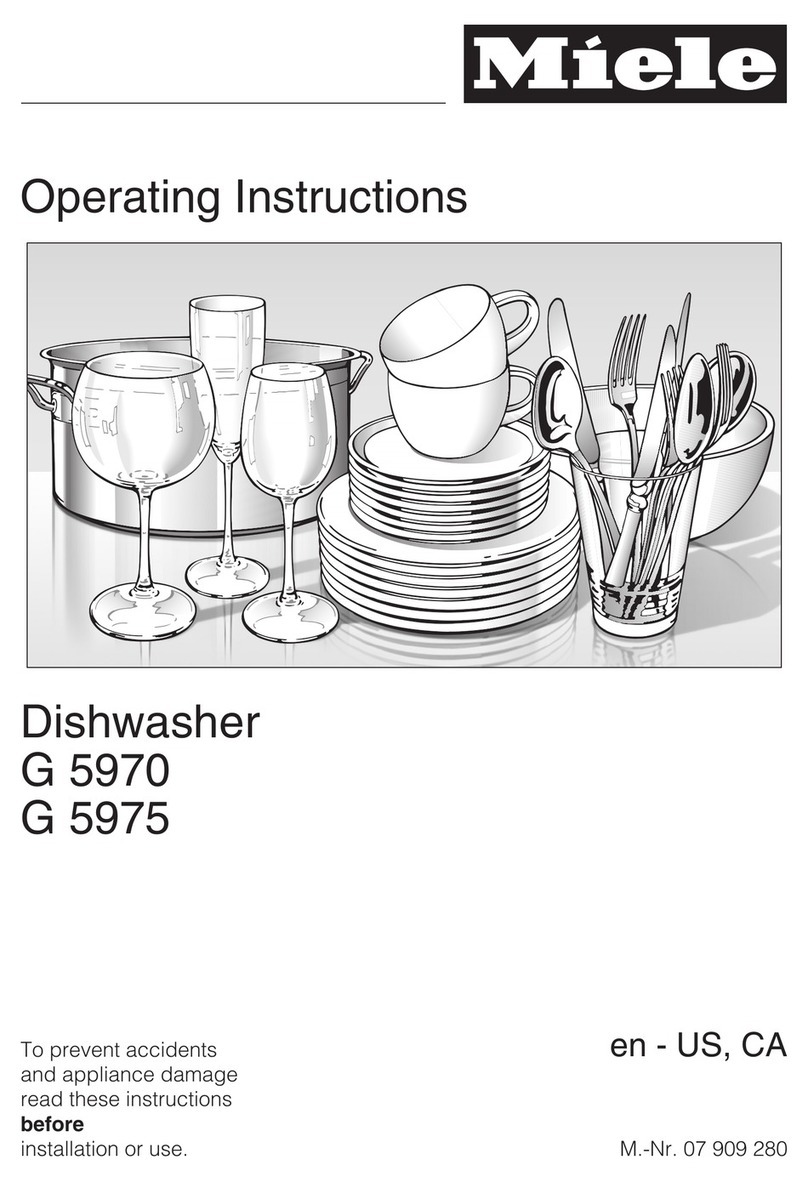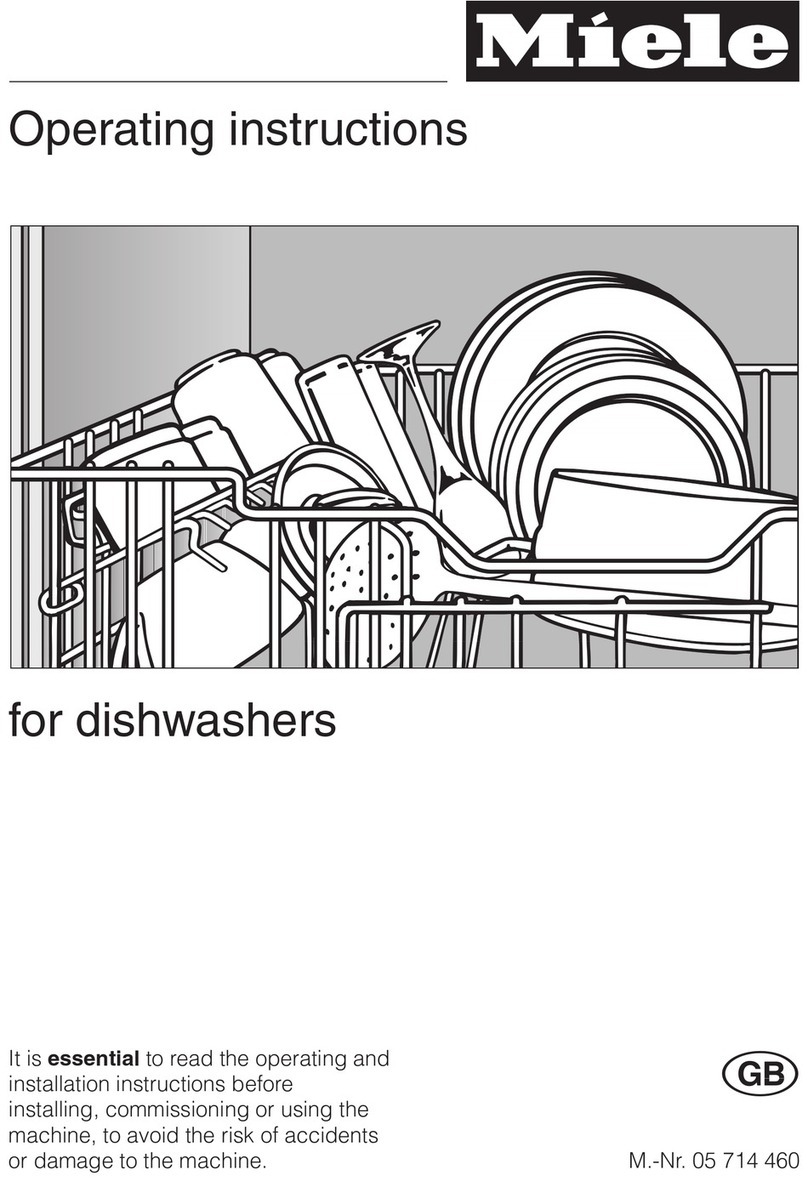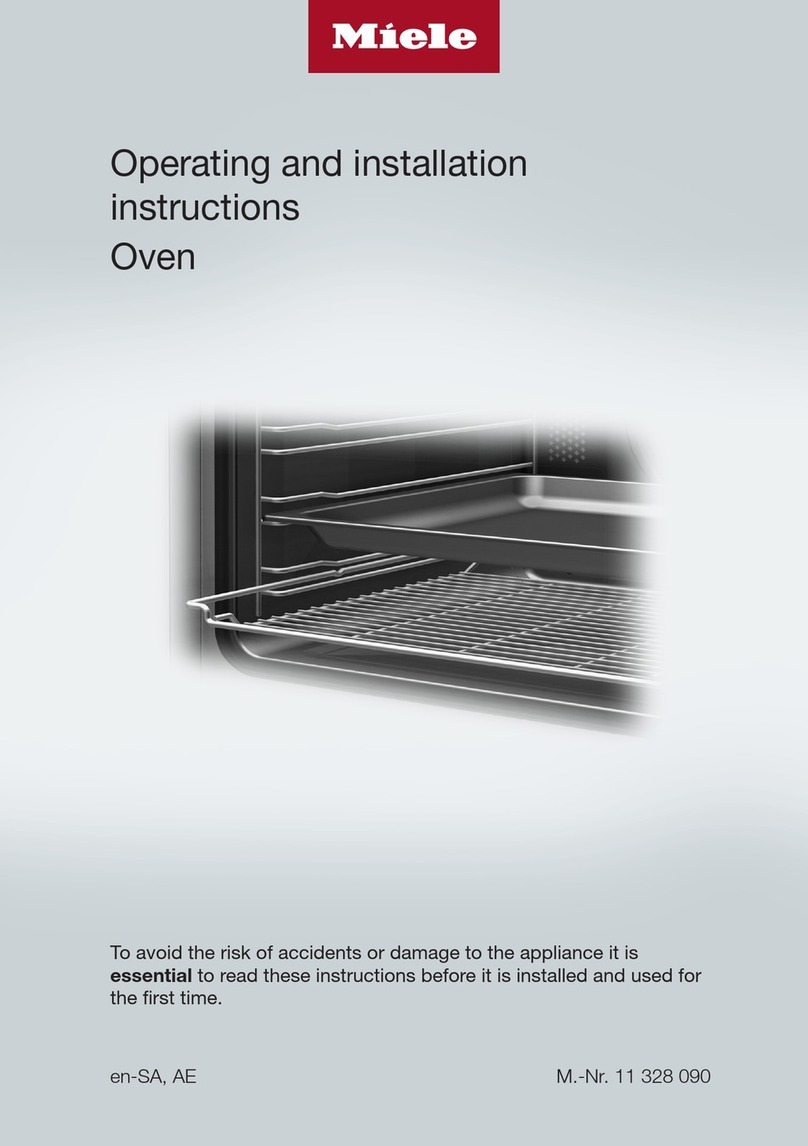Installation
~The dishwasher must be installed
and connected in compliance with the
installation instructions.
~Installation and repair work should
be performed by a Miele authorized
service technician. Work by unqualified
persons could be dangerous and may
void the warranty.
~Do not install or use a damaged
dishwasher. A damaged appliance is
dangerous. Unplug the machine and
call your Miele dealer or the Miele
Technical Service Department.
~Ensure that any plastic wrappings,
bags, etc. are disposed of safely and
kept out of the reach of children.
Danger of suffocation!
~This equipment is not designed for
maritime use or for use in mobile
installations such as recreational
vehicles or aircraft. However, under
certain conditions it may be possible for
an installation in these applications.
Please contact the nearest Miele dealer
or the Miele Technical Service
Department with specific requirements.
~It is recommended that the
dishwasher only be connected to the
mains with the plug (no hard-wiring).
The outlet must be accessible at all
times after installation to disconnect the
dishwasher.
~,WARNING - Fire hazard
Do not cover or crush the plug of the
appliance. Ensure that the cabinet
opening for the dishwasher provides
ample space for the plug. Installing the
dishwasher in a tight space may crimp
the power cord or put pressure on the
plug which could cause overheating.
~This dishwasher should only be
installed under a continuous counter
top secured to adjacent cabinetry.
~Do not install this dishwasher
beneath a cooking surface, oven or any
appliance that radiates heat.
High temperatures from these units
may damage the dishwasher.
~When installing the dishwasher
under a counter top and removing the
toe-kick, a build-under toe-kick must be
installed. Use the respective installation
kit. Danger of injuries.
~Do not cut the intake hose or
submerge it in liquid. This hose
contains electrical components that
could cause injury or property damage
if cut or submerged.
~Only connect the dishwasher to the
mains when all installation and
plumbing work is complete.
IMPORTANT SAFETY INSTRUCTIONS
5


